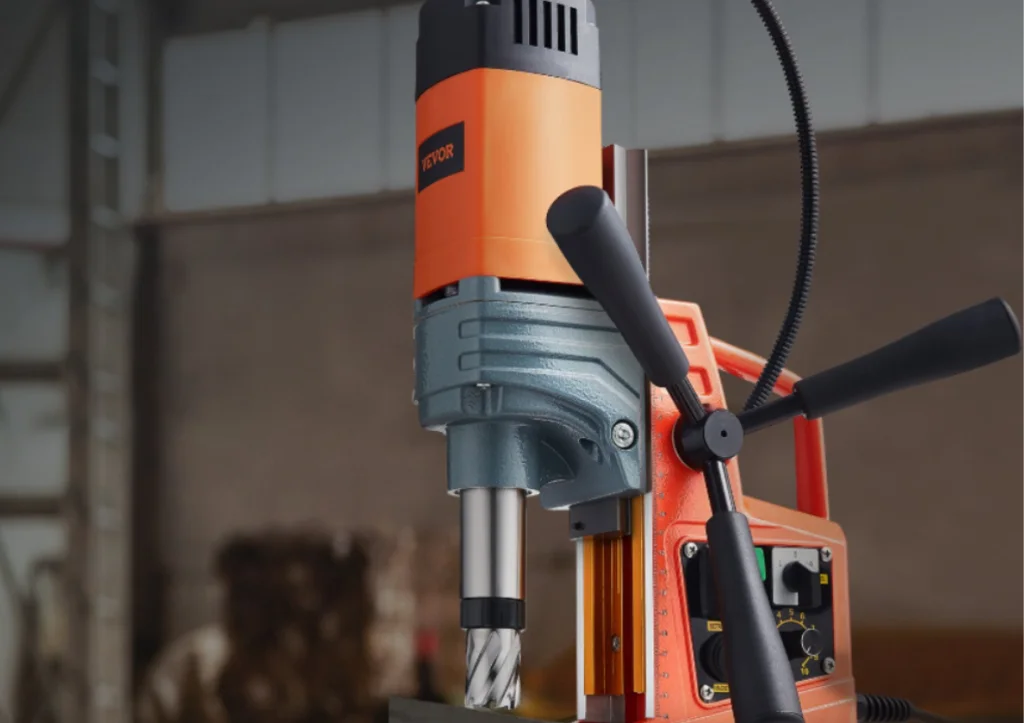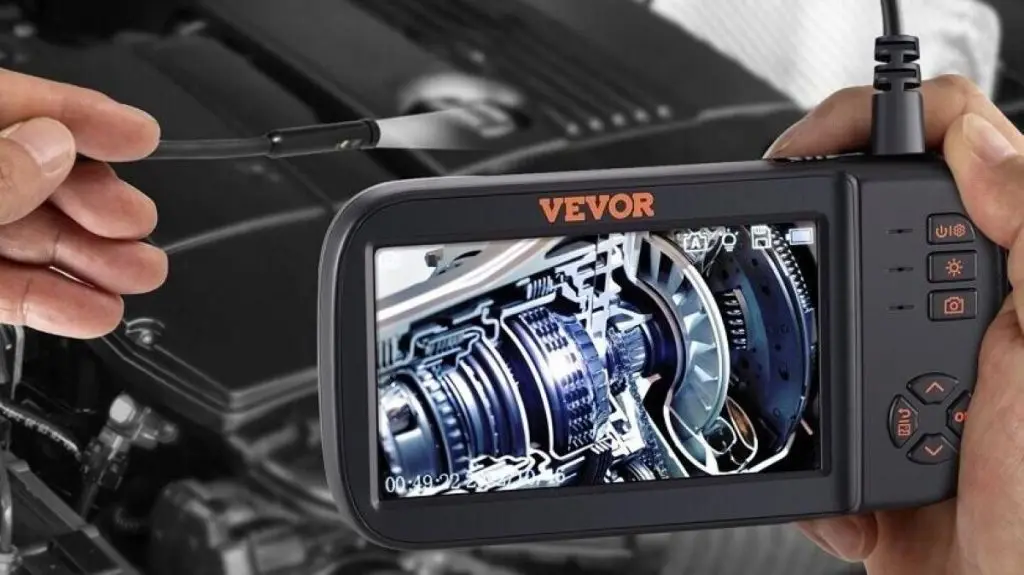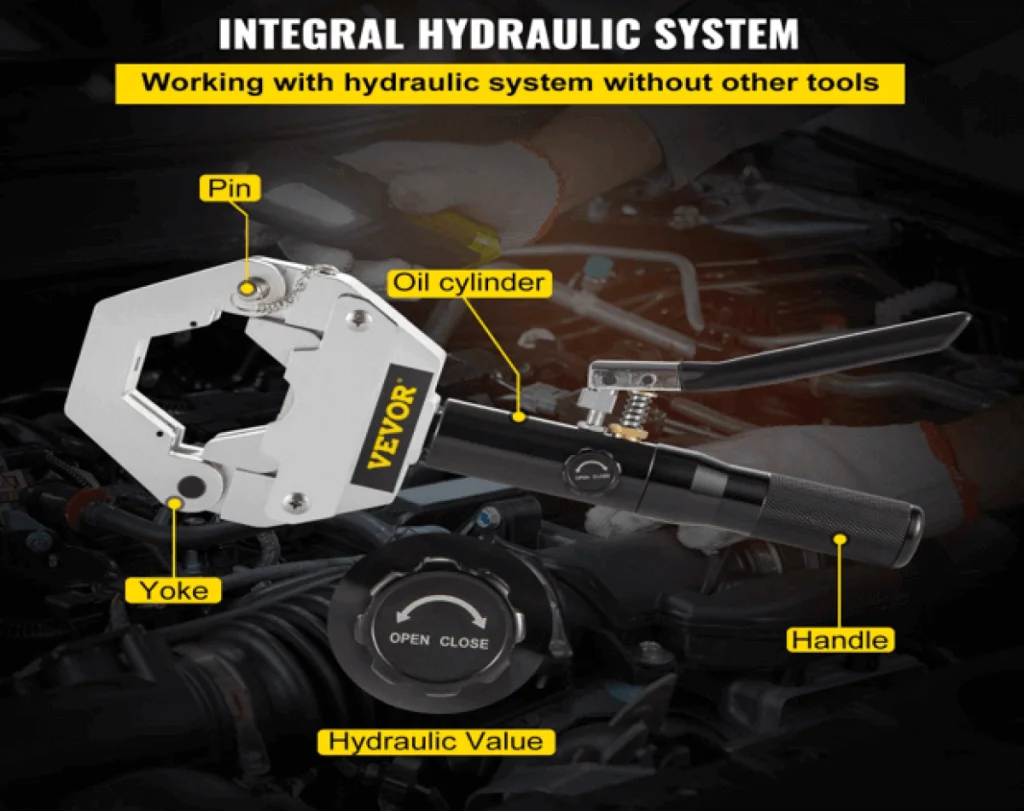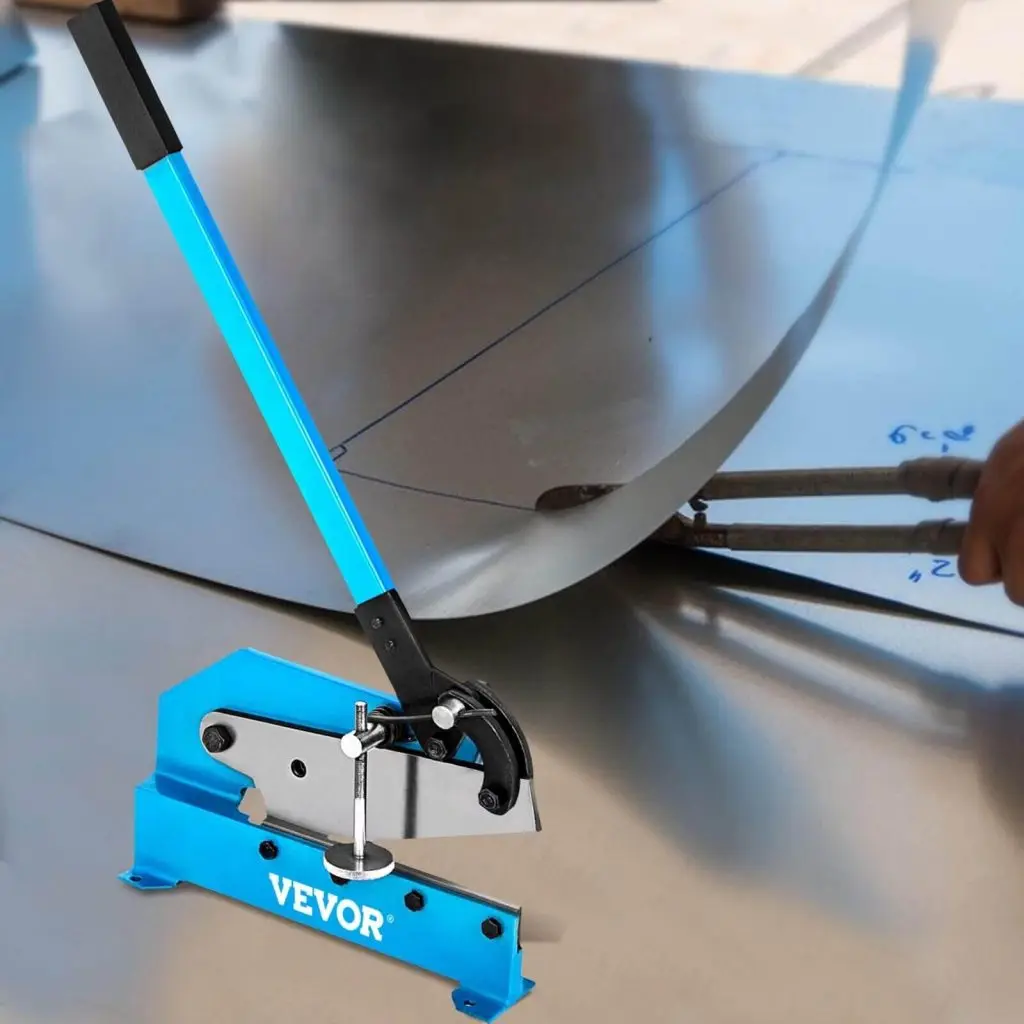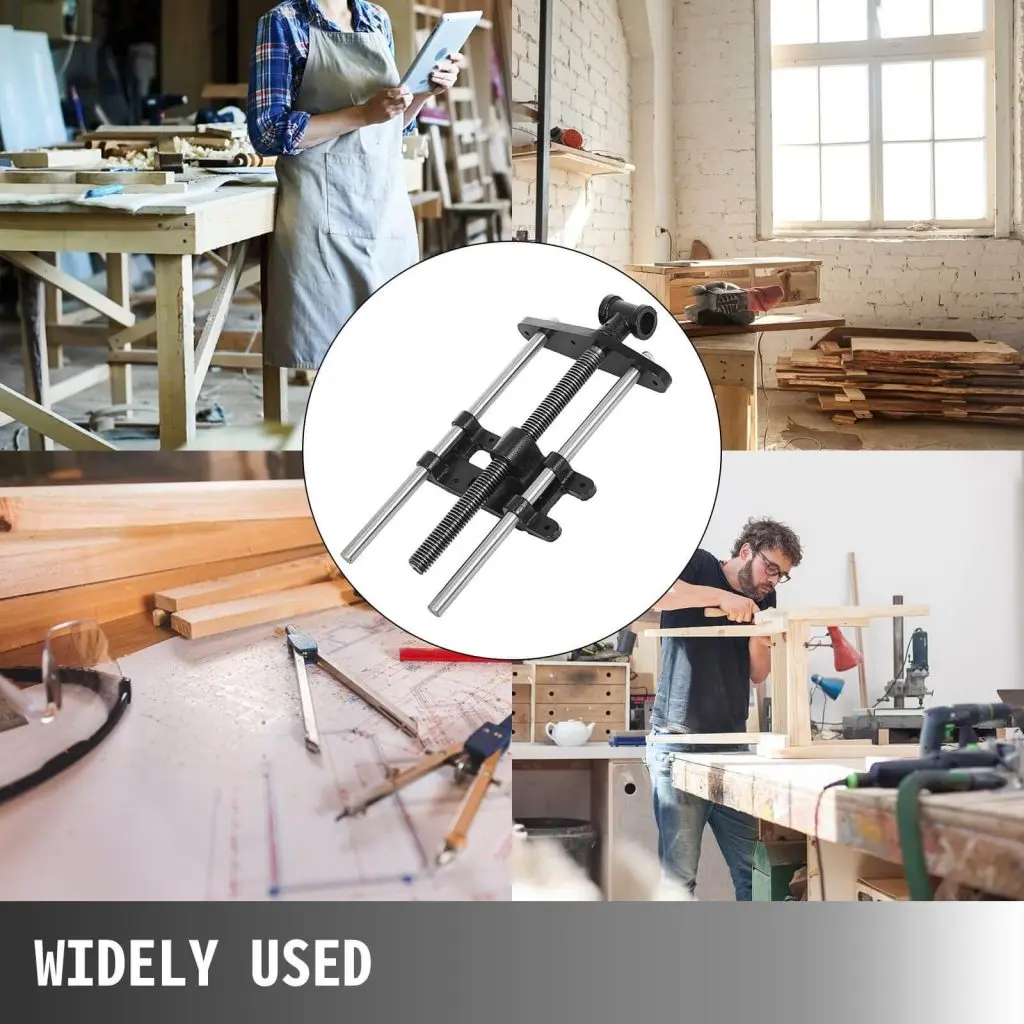If you are looking to drill through metals, then you might be stumped as to what the right tool to use is.
Sure, a regular drill might be able to handle some metals, but in the grand scheme of things, it’s a much more specialized type of tool that you’ll need for drilling through metal.
This is where the mag drill comes into play, but that said, what is a mag drill, one like the VEVOR Mag Drill? Exactly what a mag drill is, what it is capable of, and how they function, and much more, will all be covered today.
Table of contents
What is a Magnetic Drill?
A magnetic drill is a special type of drill that uses powerful magnetic forces to hold itself to the workpiece being worked on.
On that note, magnets generally only work with ferrous materials, which means that they contain iron, and for this reason, mag drills are designed specifically for drilling holes through metal, particularly ferrous metals.
As you’ll see further below, there are quite a few different types of mag drills, as well as different considerations to keep in mind when choosing the right one for you.
Mag Drill Anatomy
The mag drill features a variety of components that make it what it is, with the following being the main components.
- Every mag drill has a motor of varying power levels, designed to drill through metals. Different drills may also operate at varying speeds.
- Every mag drill features a magnetic base used to hold the drill to the workpiece underneath.
- Mag drills all come with a drill stand, which helps to keep the motor support, and often includes a guide rail.
- The mag drill has a control panel that includes buttons or switches to activate the magnets, control the speed, and more.
- The chuck or arbor of the drill is what holds the drill bit.
- Some magnetic drills may also come with coolant systems to help them stay cool and to prevent overheating.
Drill Bit Anatomy
Interesting to note is that the drill bits themselves also have various parts that are worth being familiar with.
- Every drill bit has a body, which is the main part, often containing slots for material ejection. These drill bits are usually made of carbide or high-speed steel.
- Drill bits have teeth, which is the section near the front of the bit, on either side of the tip, that actually cuts the metal.
- Every drill bit has a pilot pin, which is a small point that helps to get the hole started and to guide it along.
- Drill bits have shanks, which is where the drill bit inserts into the chuck or arbor of the mag drill.
What is a Mag Drill Use For?
What is also interesting about magnetic drills is that they can be used for a wide variety of purposes. Yes, they are usually always used for drilling through ferrous metals, but there are many applications or industries here as well.
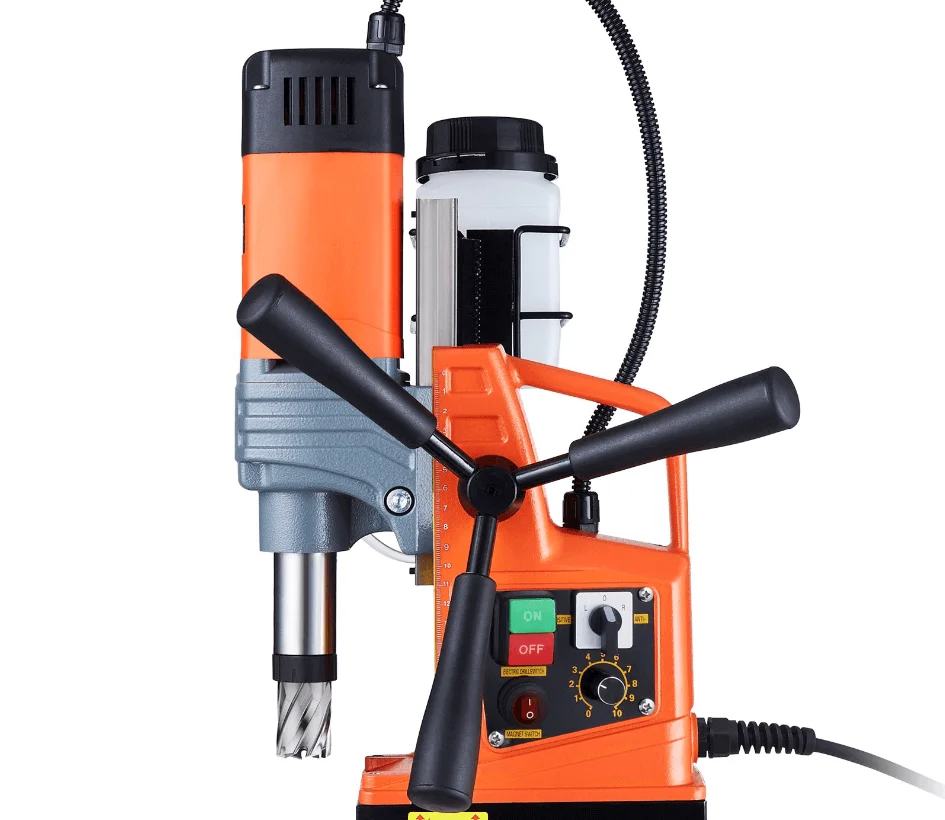
Precision Drilling in Metal
If drilling precise holes is what you need, then using a mag drill is your best bet. Magnetic drills, due to their magnetic bases, are very secure and stable. This, combined with their high-precision bits, allow for precision drilling through metal, where great accuracy is of utmost importance.
Steel Fabrication
One of the most common areas where mag drills are used is steel manufacturing and fabrication. When creating custom metalwork, frames, structures, and more, mag drills are used to drill large holes into thick sections of steel and other related materials.
Creating Pass-Through Holes
You don’t always need large holes in metals. Sometimes, you might just need a pass-through hole, which is a hole where something like a bolt, screw, a pipe, wires, or other components are passed through. The precision afforded by a mag drill makes this process easy and fast.
Maintenance and Repairs
In industries such as heavy machinery, mining, shipbuilding, and metal-related fields of all sorts, mag drills can be used to make repairs, such as by removing small sections of metal that need replacing, or to make holes to reach other damaged components.
The Benefits of a Mag Drill
You might be wondering why you would ever buy a mag drill, and here are five main reasons as to why you may want to consider doing so.

Precise
Perhaps the biggest benefit of using a mag drill is that it is precise. Sure, you can use a regular drill with a metal drill bit to get through a hunk of metal, but it just won’t be nearly as precise or accurate as when using a mag drill. This is exactly what mag drills are made for, precision metal drilling.
Portable
Although not always the case, there are some great compact mag drills, even electromagnetic drills, that are considered to be fairly portable. Being able to bring a mag drill to the job site is vital in many cases.
Stability
Yet another big benefit that comes with using a magnetic drill is that it is very stable. Thanks to the magnet that holds the drill in place while it operates, it minimizes vibrations and allows for maximum stability, therefore ensuring not only precision, but also safety.
Versatile
What’s really convenient about mag drills is their versatility, mainly because they are compatible with a range of accessories and bits that can perform various tasks in relation to metal drilling. Although these drills are used mainly for ferrous metals, they can also be used for other materials.
Speed
Mag drills have efficiency on their side. Their powerful motors, high speed designs, and special drill bits all come together to make mag drills very fast at drilling through metal, faster than virtually any other tool out there.
Mag Drill Types

Before you go out and buy a mag drill, there are different types to consider, four main types to be exact.
Electromagnetic
The most common type of mag drill is the electromagnetic variety. These use electricity to activate the magnet which holds the unit in place. It’s a fan-favorite thanks to its very powerful hold that allows for great precision and safety when drilling. These work really well with ferrous metals, and are efficient too. However, keep in mind that they require electricity to function.
Hydraulic
There is then the hydraulic mag drill, which is the largest and most powerful of all types, although not something that you would usually find in a home setting, or even in a small shop. Due to using hydraulics, these types of mag drills have extremely strong holding power, and generally also have extremely powerful motors. They are usually only used for industrial purposes and large-scale manufacturing.
Pneumatic
There is also the pneumatic mag drill, which uses a pneumatic air pressure system to operate. They are ideal for wet conditions and for use in explosive or combustible atmospheres, as they do not use electricity. This variety is smaller than the electromagnetic version, therefore also making it highly portable and maneuverable. However, their performance can be a bit limited in some cases.
Compact
Finally, we have the compact mag drill, which as you might be able to guess by the name of it, is small and compact, designed for portability. Although they may be smaller than the rest of the pack, they still have plenty of speed and power. Compact mag drills can be pneumatic or electromagnetic, which allows for great versatility.
Choosing a Mag Drill
When purchasing a mag drill, there are a few important considerations that you’ll need to keep in mind, so let’s find out what these are right now.
Hole Size Needed
Always pay attention to the size of the hole that you need. A larger hole generally requires a more powerful motor and unit. You may also require larger-than-standard chucks or arbors to accommodate larger drill bits or special accessories for big and thick materials. Something like this VEVOR Mag Drill is perfect for such purposes.
Materials Being Drilled
The vast majority of mag drills are made to work with ferrous metals, in which case an electromagnetic model is generally best. However, the hardness of the material can impact your choice because much harder and denser metals require more motor power and speed to be drilled through. The harder the material, the more power you’ll need.
Magnetic Holding Power
You also need to consider the magnetic holding power of the unit in question. For heavy-duty purposes, somewhere around 2,000 pounds of holding power is required, at the least, with more being preferable. However, for smaller applications, this may be much more than needed.
Type
Always consider the type of mag drill in question. We already covered the different types above, so we aren’t going to get back into this. However, take into account the differences between electromagnetic, pneumatic, compact, and hydraulic mag drills when making your choice.
Portability
Portability is another key aspect of a mag drill that you need to take into account. If you’re always moving around and going from one job site to another, having a smaller and more portable version is called for. That said, if power is what you need, and you don’t mind the unit being most stationary, then electromagnetic or hydraulic options can be considered.
Cost
Consider both the upfront costs and the costs of maintenance, parts, bits, and more. Although a higher upfront cost may hurt your wallet, the quality of a product often coincides with its price. In simplest terms, don’t get the lowest costing mag drill, because its performance will likely be in line with its low price.
FAQs
Do Mag Drills Only Work on Ferrous Metals?
While mag drills are designed to work primarily with ferrous metals, there are special attachments and bases which can be purchased to allow these units to work with metals and other materials that are not magnetic.
Can I Use a Mag Drill in an Overhead or Vertical Position?
As long as the mag drill’s magnetic holding power exceeds its own weight, then yes, a mag drill can be used overhead.
What is the Best Way to Maintain a Mag Drill for Longevity?
Always inspect your mag drill for any signs of general wear and tear, and make repairs as needed. Ensure that all moving components are lubricated according to the manufacturer’s instructions, and never perform tasks with a mag drill which it was not designed to perform.
What is a Mag Drill – Final Thoughts
The bottom line is that mag drills are very versatile tools that can easily cut through ferrous metals and so much more.If you are on the hunt for a good mag drill, something that can drill holes through metal with great precision, accuracy, and speed, and all for a reasonable price. Then we certainly recommend checking out VEVOR’s selection of high-quality and affordable mag drills.

